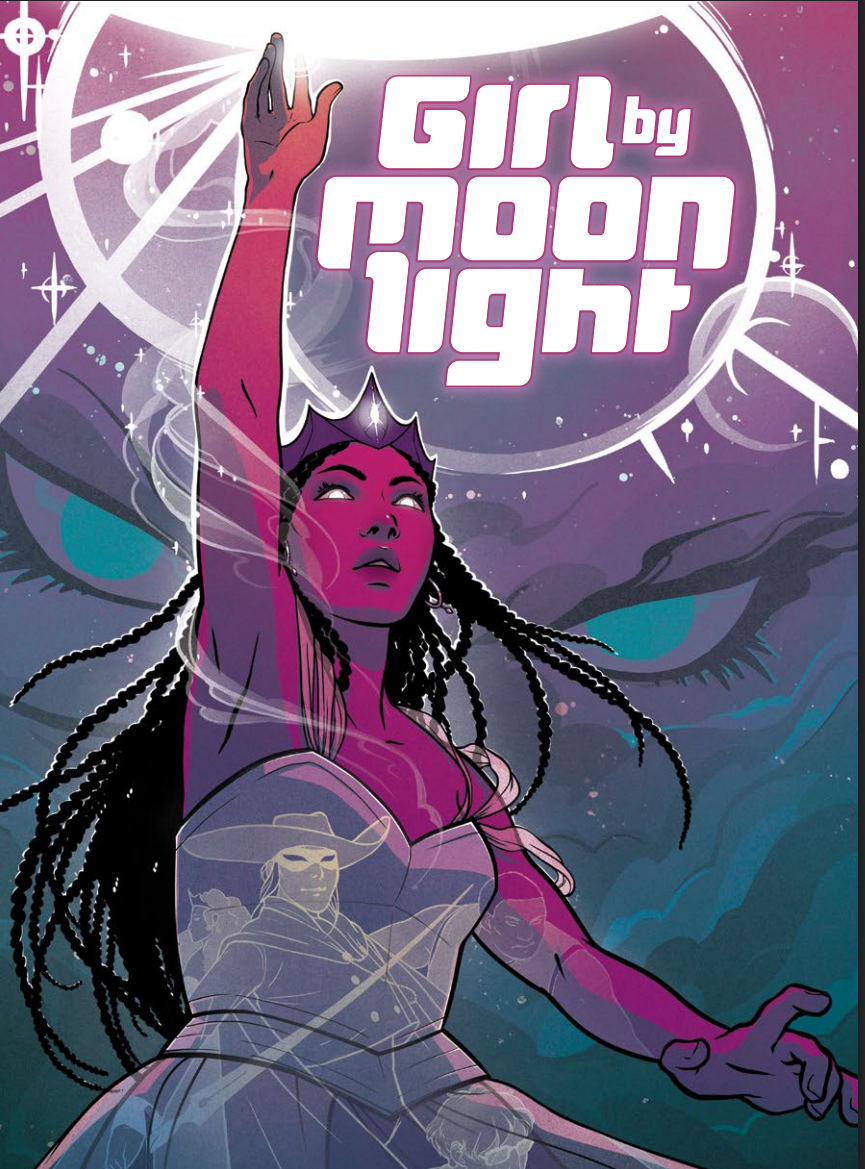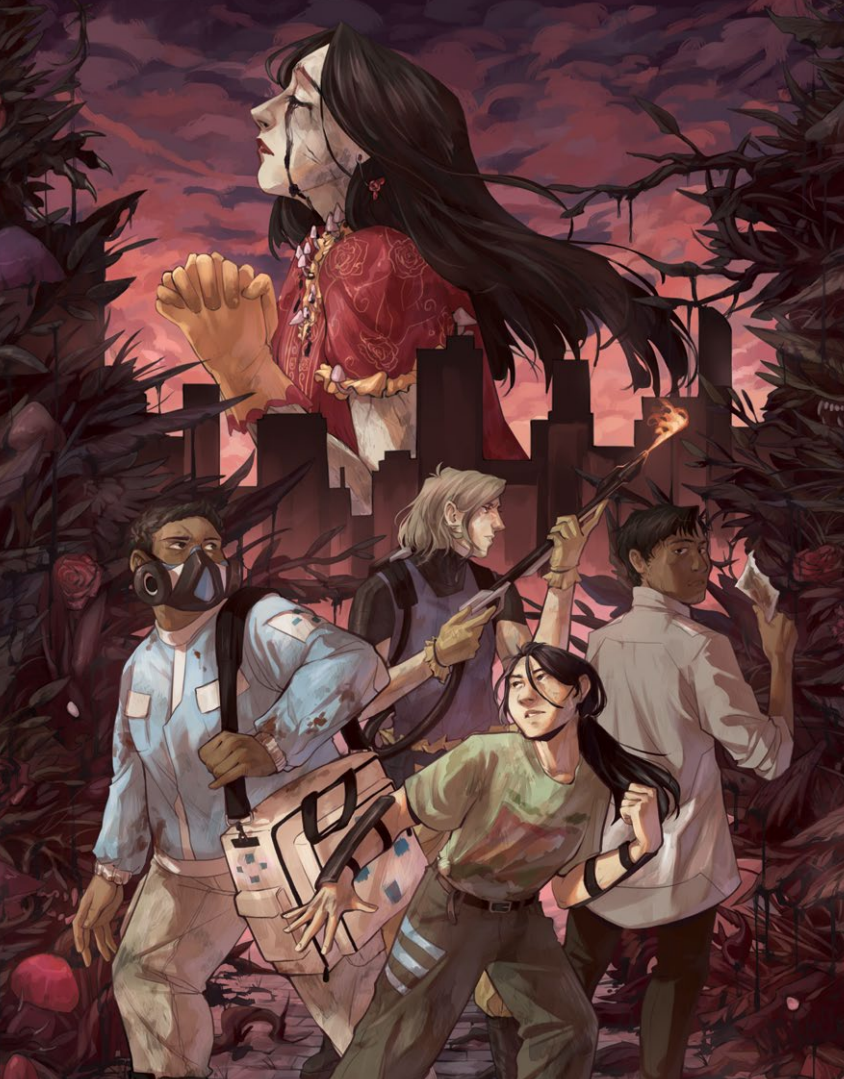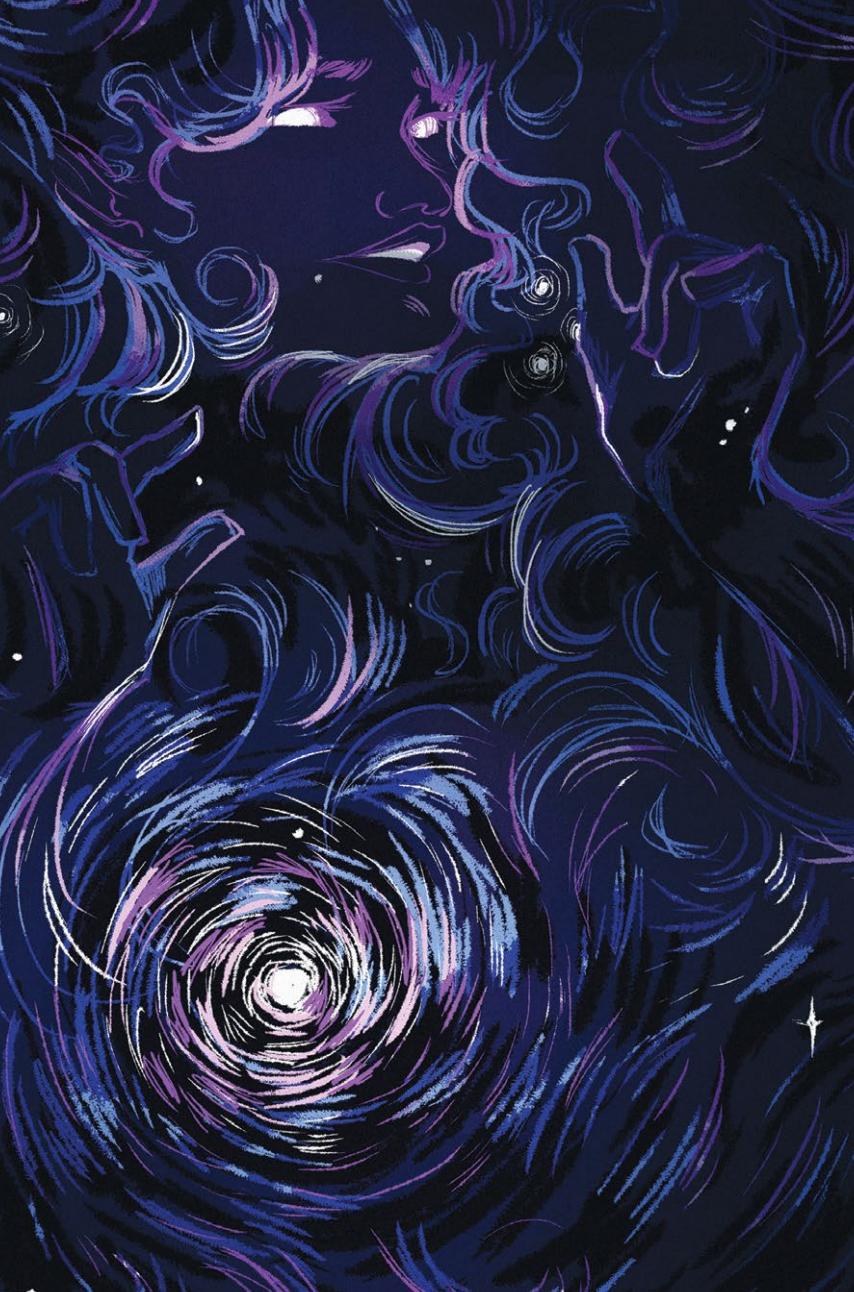
Hope can be a powerful thing. The desire to believe, to push on in the face of adversity has been the subject of countless stories. From Star Wars, which asserts that "rebellions are built on hope", to Warhammer 40,000’s more cynical message that "hope is the first step on the road to disappointment."
Discussions about the strength, or the futility, of hope have rumbled on for as long as people have told stories. Whatever other vices may have burst forth from Pandora’s Box, or jar if you’re feeling pedantic, the emergence of hope at the end serves as a reminder that while the world is full of evil, that evil can still be confronted.
Hope then is one of the central themes of Girl By Moonlight, a Magical Girl themed TTRPG designed by Andrew Gillis and published by Evil Hat Productions.
“The game is about hope, and the game is about seeking change.” Gillis told us. “Hope can only exist in desperate, terrible circumstances. You don’t need hope when things are going well. You don’t need hope when stuff is working.”
The Magical Girl genre tells stories about young women who use the power of magic, friendship and, yes, hope to overcome overwhelming odds and set the world to rights. Japanese manga/anime series Sailor Moon is the most famous piece of Magical Girl media, but Magical Girl stories come in a wide variety of forms and adopt a wide variety of tones.
Puella Magi Madoka Magica, for example, sharply contrasts the optimism of Sailor Moon and offers instead a bleak vision of a monstrous world where teenage girls are exploited, used up, and cast aside in a seemingly impossible endeavour to rid the world of evil. It was this second, darker series, that served as Girl By Moonlight’s immediate inspiration.
“Watching Madoka was the inciting incident. I don’t know if I would call it my favourite, but certainly it was what most informed, and sparked the production of the game.” Gillis said.
Girl By Moonlight takes the Magical Girl genre and uses it as a vehicle to explore themes of identity, sexuality and self-acceptance. One of Gillis’s key design goals was to allow players to author their own magical girl stories, inspired but not confined by the works that came before them.
“I’m deeply allergic to and annoyed at ideas of canonicity and being sticklers to being in a world and having everything be aligned with that,” Gillis said. “I really wanted to make a game where people could put their own unique story into the broader canon of Magical Girl media, rather than saying it’s a Sailor Moon simulator.”
The game is built around the Forged In the Dark system, the rule set derived from John Harper’s Blades In The Dark, also published by Evil Hat.
“There was a false start when I was using a Powered by the Apocalypse model. When I saw Blades In the Dark and what it could do, I thought it was a much better fit," Gillis explained. “A lot of elements of the game were born out of converting, adapting, and modifying existing structures and mechanics from Blades.”
Like its predecessor, Gillis’s game uses dice pools full of d6s, flashbacks, position and effect modifiers, and clocks that are gradually filled in as the party completes complex tasks.
Modifications have been made to the standard Forged in the Dark ruleset though, most notably the transcendence system. When characters “transcend”, they shed their mundane identities and, like a Sailor Soldier powering up, assume a magically empowered new form.

Transcending grants a variety of mechanical benefits, but thematically it offers something far richer. It’s transcendence that enables much of the game’s conversation around identity and gender, describing it as a means of “embodying your truest self,” and “an exultant expression of everything that the characters are forced to bury and deny about themselves in their day to day lives.”
Transcendence in Girl By Moonlight then can act as an allegory for accepting one’s true gender identity. A character’s transcended self, that emerges by night, does not have to inhabit the same pronouns as the mundane self which they present to the world. Gillis argues that this taps into ideas that have long been present in the magical girl genre.
“The magical girl genre has always been transgressive in the category of identity,” Gillis said. “I don’t know if I was setting out to make a game about that, but in the course of designing I was getting more engaged in my own self-discovery, and realised how this was a throughline that ran all the way back to my childhood exposure to these shows, to this genre, and to the topic of femininity in general, and so it was a way for me to work through my own stuff as I was figuring it out.”
One of the mechanics brought into Girl By Moonlight from Blades In The Dark is its stress system. The protagonists grow increasingly exhausted both from their nocturnal magical adventures, and from having to endure and grind their way through their day-to-day obligations.
There is an important distinction though between how stress works in the original game and how it works here. When a scoundrel in Blades in the Dark reaches maximum stress they are taken out of the action and left for dead. This not only sees them removed from the current scene but also suffer lasting consequences too as the character gains trauma.
Contrastingly, in Girl By Moonlight, characters that are overcome by stress “eclipse.” Inspired by the darkest self system from Avery Alder’s Monsterhearts, eclipsed magical girls remain active and controllable, but are overcome by doubt and become despondent and self-destructive.
“Tragedy and pushing people into these really desperate positions then allows for this idea of eclipse, where they don’t break through and instead collapse and invert,” Gillis said. “Eclipse is to my mind the pinnacle of the game mechanically.”

The importance of the eclipse system is rooted in how it interacts with the push yourself mechanics inherited from Blades in the Dark. Characters in either game can ‘push themselves’, taking on more stress to roll additional dice and make their actions more likely to succeed. This enables character in Girl By Moonlight to sacrifice their own well-being in the name of success, pushing themselves into a state of eclipse.
“In overreaching and pushing themselves too far, using the push yourself mechanic, character can break upon their goals and have this inversion,” Gillis said. ‘Seeing people discover how they can tap into it for power. I’m very proud of how the mechanics feed into this loop of pushing yourselves too far and overreaching your limits and showing your character’s flaws and their breaking point.”
This connects back to the game’s central theme of hope. Eclipsing demonstrates how heavily the odds are stacked against the characters, and the painful toll that fighting against injustice takes on their mental health.
“Hope to my mind necessitates a tragic frame and a really grim scenario. In order for it to matter and feel important,” Gillis said. “Hope as a central element of the game means that characters will be pushing up against the impossible.”
Even the seemingly impossible can be overcome, and characters are able to bring their state of eclipse to an end. Every playbook in Girl By Moonlight has a different condition to escape eclipse, but they all require another character to reach out and demonstrate support and solidarity.
“Someone else has to come in and pull you out of that, and you get good character moments and interactions and building of relationships through those explorations of your character’s worst parts,” Gillis said. “We get to see the other characters reach past that to remind you of your good qualities.”
Living authentically and staying true to your identity in the face of a hostile world isn’t easy, and at times it can feel impossible. Girl By Moonlight demonstrates that for all that, through friends and found family, we can still find the hope to persevere, and to transcend.

